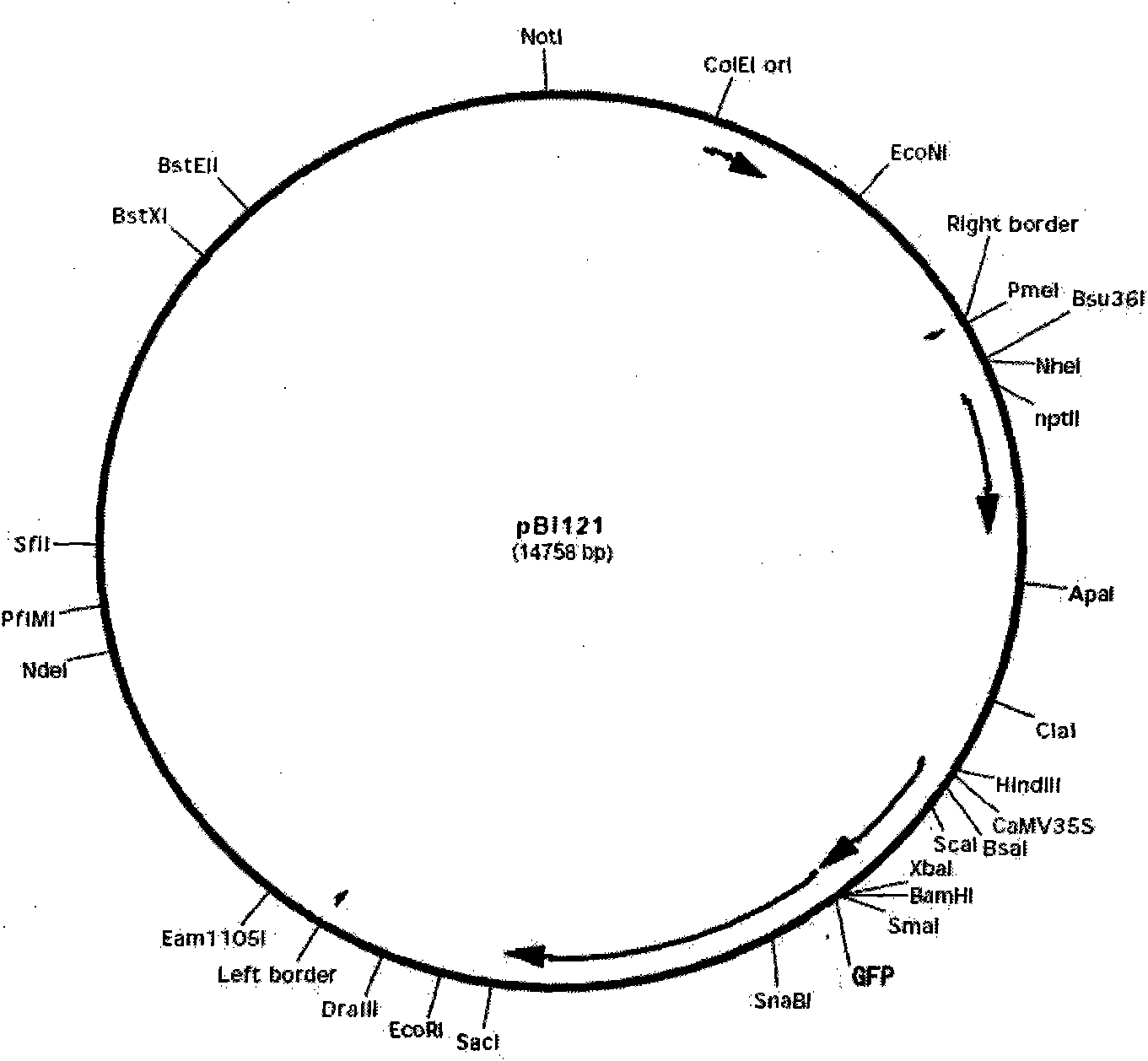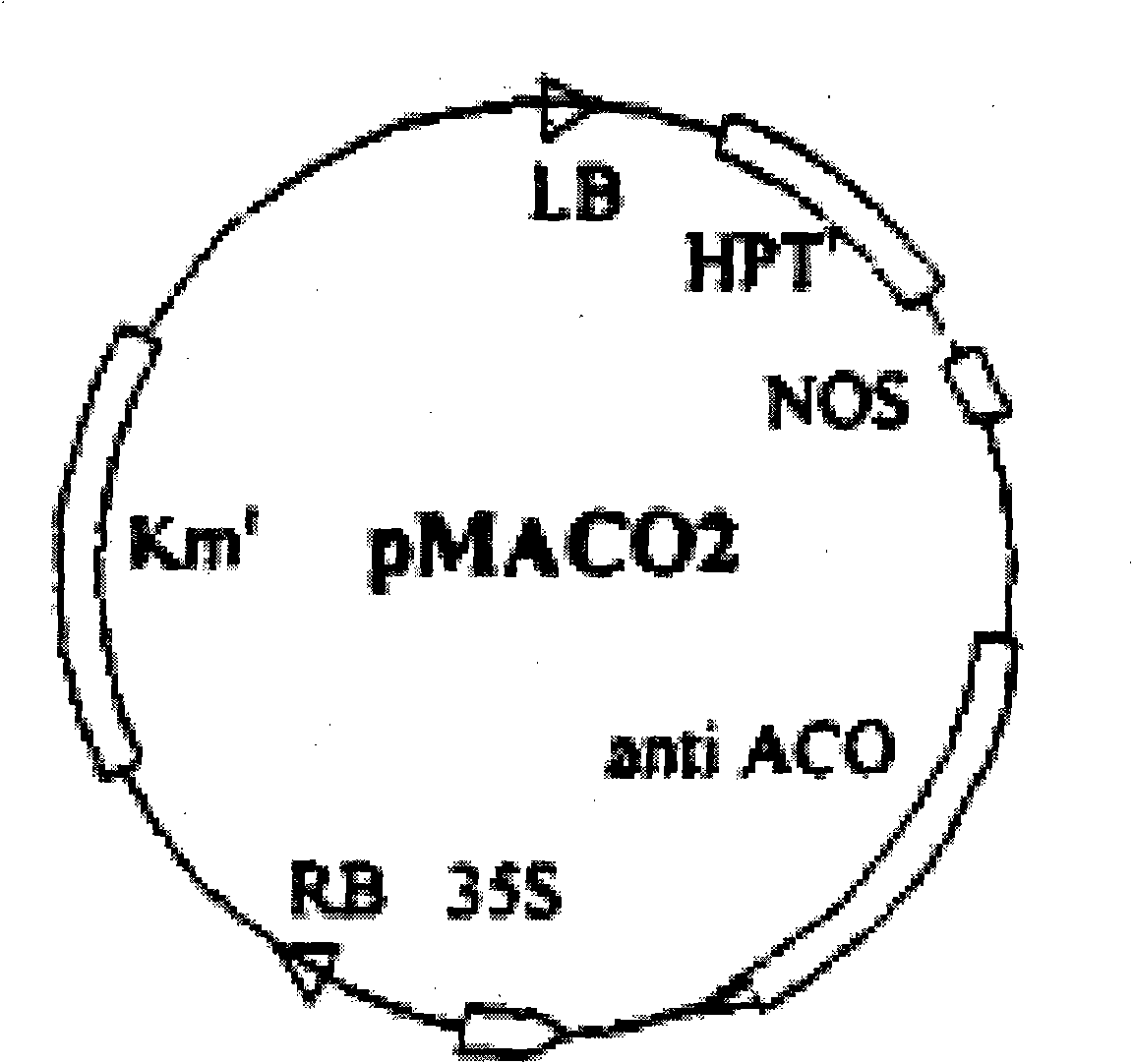Method for culturing transgenic dianthus through agrobacterium-mediated embryogenic callus transformation
A technology of embryogenic callus and Agrobacterium, applied in the field of ornamental plant tissue culture and genetic transformation, to achieve the effects of good stability, high regeneration rate, and easy access
- Summary
- Abstract
- Description
- Claims
- Application Information
AI Technical Summary
Problems solved by technology
Method used
Image
Examples
Embodiment 1
[0046] Induction and subculture of embodiment 1 dianthus embryogenic callus
[0047] 1) Material collection and low-temperature treatment. At around 9:00 a.m. on a sunny and dry day, collect dianthus flower buds growing in the field with a length of 7.0-8.5 cm, put them in a petri dish lined with moist filter paper, and place them in a 4°C refrigerator Refrigerate for 4-6d.
[0048] 2) Disinfection and inoculation of materials. The flower buds in step 1) are first washed with washing powder water, then rinsed under tap water for about 1 hour, and then disinfected on an ultra-clean workbench. The process is as follows: First, soak the flower buds in a 70% ethanol triangular flask for 1 minute, wash them with sterile water twice; then sterilize them with 0.1% mercuric chloride for 10-12 minutes. To make the flower buds fully contact with the mercuric chloride solution; then rinse with sterile water for 3-5 times, take out the sterilized flower buds and place them on sterile fil...
Embodiment 2
[0051] Example 2 Transformation of GUS reporter gene into embryogenic callus of Dianthus chinensis by Agrobacterium-mediated method
[0052] The dianthus embryogenic callus obtained in Example 1 was used as a marker of the GUS reporter gene for transformation experiments. Specific steps are as follows:
[0053] 1) Under the aseptic environment of the ultra-clean workbench, take the dianthus embryogenic callus of embodiment 1 on the sterilized filter paper, crush it with tweezers, and disperse it; pick which is bright yellow, with compact tissue, Granular embryogenic callus was used as material for transformation.
[0054] 2) Inoculate the embryogenic callus obtained in step 1) in the pre-culture medium on the ultra-clean workbench, and perform pre-culture before infection. The culture conditions are: temperature 25 ± 1 ° C, relative humidity 50% ~ 60 %, the light intensity is 2000-3000lux, and the light / darkness is 16h / 8h. The embryogenic callus of precultivation treatment ...
Embodiment 3
[0082] Example 3 Transformation of antisense ACO gene into embryogenic callus of Dianthus using Agrobacterium-mediated method
[0083] The embryogenic callus obtained in Example 1 was subjected to the transformation experiment of the antisense ACO gene (the accession number is gi|520801|, see SEQ ID NO: 3 in the sequence listing). The steps are as follows:
[0084] 1) Under the aseptic environment of the ultra-clean workbench, take the embryogenic callus of Example 1 on sterilized filter paper, crush it with tweezers, and disperse it; Strong embryogenic callus was used as the material for transformation.
[0085] 2) Hygromycin (Hyg) sensitivity screening for embryogenic callus: the embryogenic calli from step 1) were inoculated in 6 pre-designed MS media respectively. These 6 kinds of media all use MS as the basic medium (ie MS), add 6-BA1.0mg / L; NAA0.1mg / L; sucrose 30g / L; agar 7.0g / L, pH5.8. When carrying out the concentration gradient screening test of antibiotics, add Hy...
PUM
| Property | Measurement | Unit |
|---|---|---|
| length | aaaaa | aaaaa |
Abstract
Description
Claims
Application Information
 Login to View More
Login to View More - R&D
- Intellectual Property
- Life Sciences
- Materials
- Tech Scout
- Unparalleled Data Quality
- Higher Quality Content
- 60% Fewer Hallucinations
Browse by: Latest US Patents, China's latest patents, Technical Efficacy Thesaurus, Application Domain, Technology Topic, Popular Technical Reports.
© 2025 PatSnap. All rights reserved.Legal|Privacy policy|Modern Slavery Act Transparency Statement|Sitemap|About US| Contact US: help@patsnap.com



